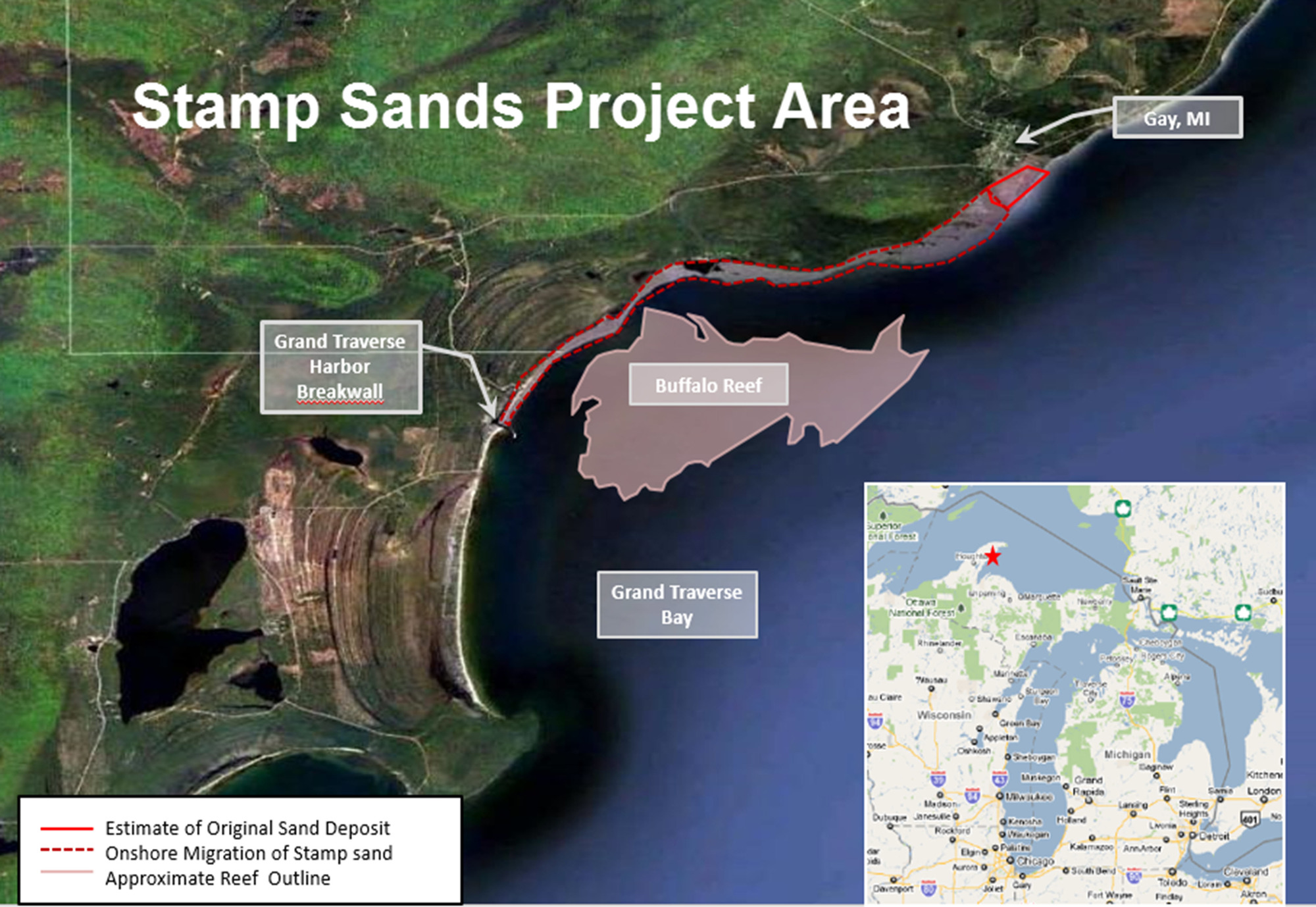A cooperative multi-entity task force created by the U.S. Environmental Protection Agency will hold a public meeting Dec. 5 in Houghton County, kicking off long-term efforts to save the important lake trout and whitefish spawning areas on Buffalo Reef from being covered with shifting stamp sands.
The meeting has been scheduled for 6-8 p.m. Tuesday, Dec. 5, at the Lake Linden-Hubbell High School Auditorium, located at 601 Calumet Street in Lake Linden.

“The stamp sands were created in the early 1900s as a byproduct of copper processing at the Wolverine and Mohawk stamp mills in the community of Gay,” said John Pepin, Michigan Department of Natural Resources deputy public information officer. “Since that time, these coarse, black sands which were dumped into Lake Superior, have drifted south and are now threatening to smother Buffalo Reef and natural beaches south of the Grand Traverse Harbor.”
Nearly a quarter of the annual lake trout yield from Lake Superior’s Michigan waters comes from within 50 miles of Buffalo Reef. The Great Lakes Indian Fish and Wildlife Commission estimates the annual economic benefit of the reef at $1.7 million.
Over the past roughly 80 years, the stamp sands have shifted south – moved by winds, waves and nearshore lake currents – about 5 miles to the Grand Traverse Harbor, covering 1,426 acres of shoreline and lake bottom.
The DNR has applied for a permit from the Michigan Department of Environmental Quality, under the Great Lakes Submerged Lands Act, to allow the U.S. Army Corps of Engineers to remove more than 200,000 cubic yards of stamp sands from Lake Superior.
The EPA has provided $3.1 million to the Army Corps to design and carry out the dredging work, scheduled for May 2018.
“This dredging project would buy 5 to 7 years of protection for the reef and the whitefish juvenile recruitment area south of the harbor,” said Steve Casey, Upper Peninsula district supervisor for the Michigan Department of Environmental Quality’s Water Resources Division. “In the meantime, we need to develop a long-term, adaptive management plan, a solution, for the Gay stamp sands problem.”

The EPA formed the task force to develop that plan over the next couple of years, which will gather input from many stakeholders, including the public.
“We will be soliciting public input on what issues the plan needs to address and looking for volunteers to help us understand and resolve those issues,” Casey said.
A task force steering committee has been named which includes Lori Ann Sherman, natural resources director for the Keweenaw Bay Indian Community, Tony Friona, Great Lakes liaison for the U.S. Army Corps of Engineers’ Engineer, Research and Development Center and Steve Casey, U.P. district supervisor of the DEQ’s Water Resources Division.
“We’re hoping construction can start on some type of control mechanism for the original pile of stamp sands by 2021, with completion two years after that,” Casey said. “We would then hope to put long-term maintenance dredging in place by 2026. The annual costs for that dredging would depend on which type of long-term remedy is selected.”
The stamp sands source pile at Gay was originally estimated to contain 22 million cubic yards of material, with 2.3 million cubic yards of material remaining today.
 Keweenaw Report Your Source for Local News and Sports
Keweenaw Report Your Source for Local News and Sports





